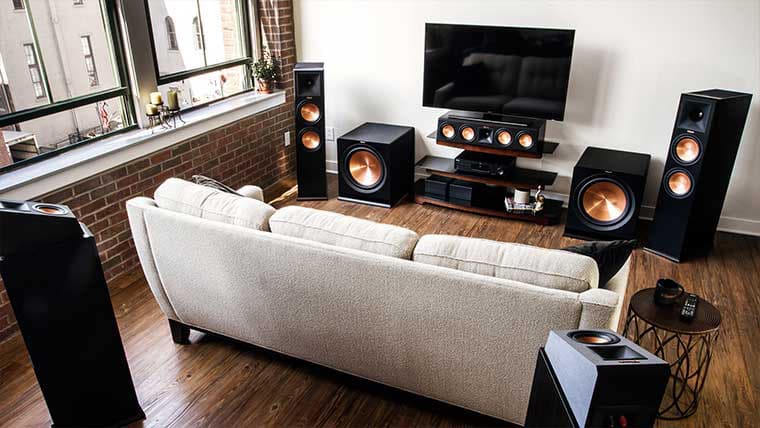A home stereo system is the heart of an immersive audio experience, whether you’re an audiophile who demands the best sound quality or someone who simply enjoys music and movies at home. In today’s world, the options for home stereo systems have grown far beyond the traditional speakers and amplifiers setup. With the rise of wireless technology, streaming, and whole home audio systems, finding the perfect stereo system for your space can be a rewarding yet challenging task.
What is a Home Stereo System?
A home stereo system consists of various components designed to deliver high-quality sound. These typically include:
- Speakers: The most critical part of the system, responsible for producing the sound you hear.
- Amplifier/Receiver: This unit powers the speakers and processes the audio signals, ensuring sound quality.
- Source Components: These include turntables, CD players, digital music players, or streaming devices that provide the audio to the system.
- Cables: Connectors that link all components together to transmit audio signals effectively.
Types of Home Stereo Systems
- Traditional Stereo Systems
These systems are built around a CD player, turntable, amplifier, and wired speakers. Although many people opt for modern technology, there is still a market for those who prefer the warmth and depth of analog sound. - Wireless Systems
Modern systems like Sonos, Bose, and other smart speakers allow you to enjoy music without the hassle of tangled wires. These systems connect via Bluetooth or Wi-Fi, letting you control them via a smartphone app. Wireless systems are ideal for those who want easy setup and the flexibility to move their system around. - Home Theater Systems
If you want to enjoy both music and movies in high fidelity, a home theater system can double as a stereo setup. These often include additional surround sound speakers to create a cinema-like experience. While a home theater system is typically more complex, it offers immersive sound for both movies and music. - Multi-Room Audio Systems
Multi-room systems like Sonos or Yamaha MusicCast allow you to set up speakers in different rooms and control them all from a single device. You can play the same music throughout the house or different tracks in various rooms, perfect for entertaining or simply enjoying music in multiple locations.
Key Features to Look For
- Sound Quality
The most important factor when choosing a stereo system is sound quality. Look for systems that offer balanced, clear sound with deep bass and crisp highs. The type of speakers, the material of the speaker cones, and the power rating all affect sound quality. - Power Output
A system’s power output determines how loud it can go without distortion. If you’re in a large room or plan to play music loudly, ensure the system has adequate power. Consider both the wattage and impedance ratings of the speakers and amplifier. - Connectivity
Ensure that the system offers the necessary connections for your devices. Many modern systems now come with Bluetooth, Wi-Fi, HDMI, and optical inputs. Consider compatibility with your existing equipment like TVs, computers, or streaming devices. - Ease of Use
User-friendly features like remote control, smartphone apps, and voice control are highly desirable in today’s smart home environment. Many stereo systems are now integrated with Alexa, Google Assistant, or Apple HomeKit, allowing hands-free control. - Size and Placement
The size of the system should match the space you plan to place it in. Larger speakers can offer better sound, but they may not fit well in a small room. Compact speakers or soundbars may be better suited for smaller spaces or those who prefer a minimalistic design.
Setting Up Your Home Stereo System
- Speaker Placement
Proper placement is essential for optimal sound. For traditional stereo setups, placing speakers at ear level and positioning them symmetrically can create a balanced sound. In home theater setups, placing surround speakers at the correct angle ensures an immersive experience. - Connecting Components
Whether you’re using traditional wired connections or a wireless setup, make sure all components are properly connected. For wired systems, use high-quality cables to minimize signal loss and interference. If you’re setting up a wireless system, ensure that your Wi-Fi or Bluetooth connections are stable. - Calibration
Many modern stereo systems come with auto-calibration features that adjust the audio settings for your room. If your system doesn’t have this, manual adjustments to the bass, treble, and balance can help fine-tune the sound.
Popular Brands
- Sonos
Known for its wireless multi-room audio systems, Sonos offers a range of high-quality speakers and soundbars that deliver excellent sound. Its easy-to-use app and integration with streaming services like Spotify make it a popular choice. - Bose
Bose has built a reputation for producing compact, high-performance speakers. Their systems are known for their clarity and balanced sound, making them ideal for both music and movies. - Yamaha
Yamaha offers both traditional stereo systems and home theater setups with advanced sound technologies. Their systems often feature unique features like clear voice enhancement and surround sound. - Klipsch
Klipsch is known for its powerful speakers that deliver dynamic, detailed sound. Their systems are especially favored by audiophiles for their ability to handle high volumes without distortion. - Denon
Denon offers high-end amplifiers and receivers that are compatible with a wide range of speakers. Known for their precision and power, Denon systems are popular with enthusiasts looking for quality sound.
